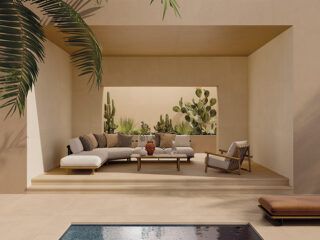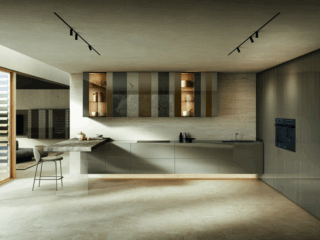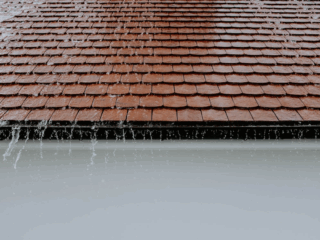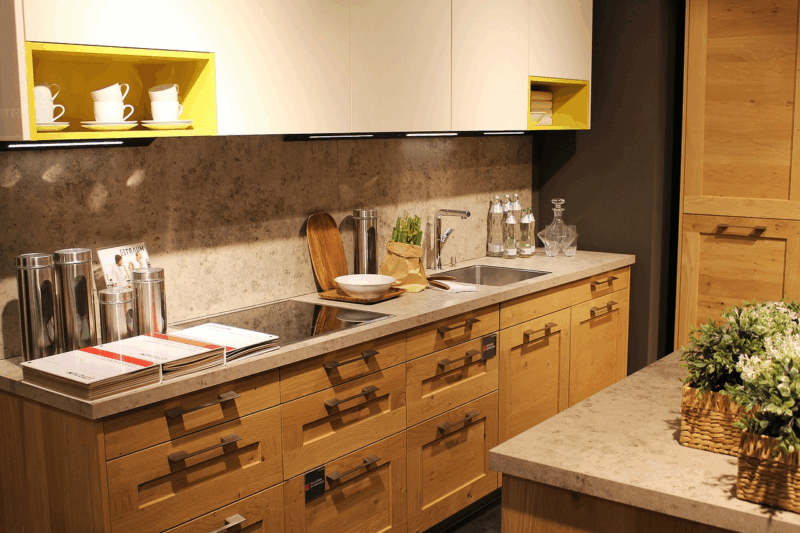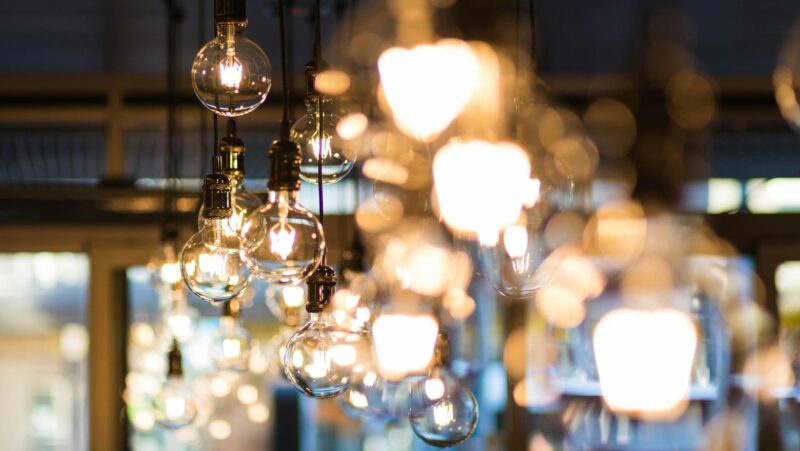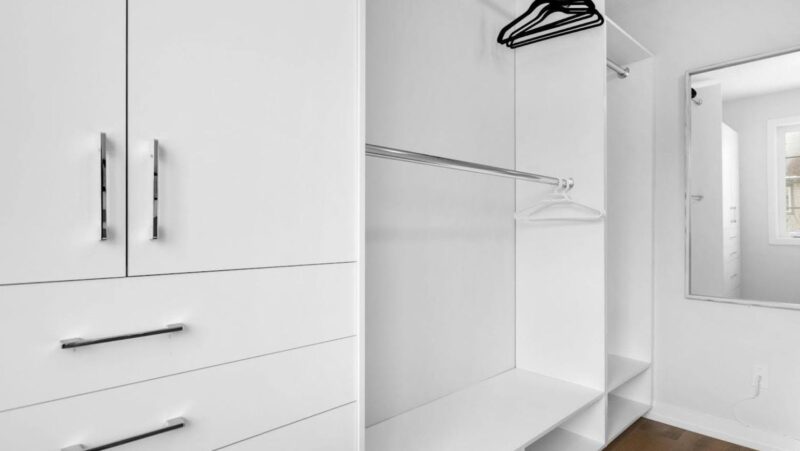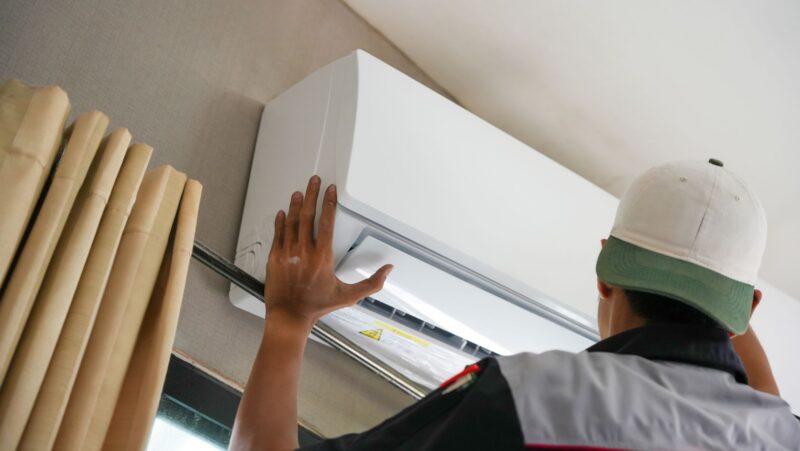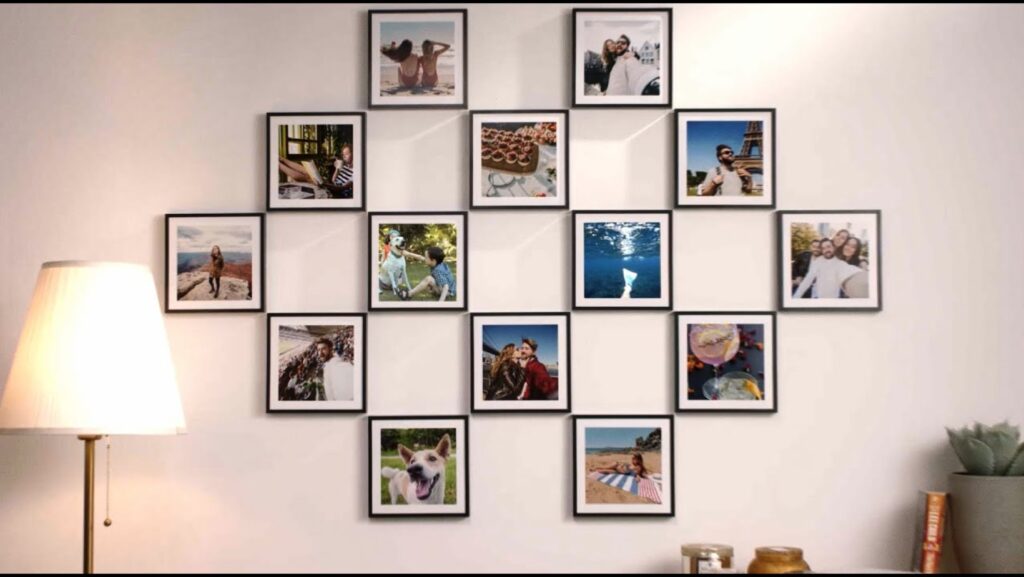
Transform your blank walls into captivating visual stories with a personalized picture wall that speaks volumes about your style and creativity. Whether you’re a seasoned decorator or just starting your interior design journey, mastering the art of gallery wall arrangement can elevate any living space from ordinary to extraordinary.
1. Symmetrical Grid Layout: Classic Precision
The symmetrical grid layout stands as a timeless approach to gallery wall design, offering a sophisticated and organized aesthetic that never goes out of style. This classic arrangement creates a sense of order and balance that’s particularly suitable for formal spaces.
Measuring and Spacing Techniques
Start by measuring your wall space and dividing it into equal sections. Use a level and painter’s tape to mark your grid lines, ensuring consistent spacing of 2-3 inches between frames. Create paper templates for your frames to test the arrangement before hanging them.
Choosing Complementary Frame Styles
Select frames that share common elements while maintaining visual interest. Consider using identical frames for a cohesive look, or choose frames in the same color family with varying widths and textures.
Creating Perfect Alignment
Use a laser level to ensure straight lines and perfect alignment. Start from the center and work your way outward, checking measurements frequently to maintain precise spacing.
2. Eclectic Asymmetrical Approach: Modern Spontaneity
Embrace creative freedom with an asymmetrical gallery wall that breaks traditional rules while maintaining visual harmony. This contemporary approach allows for more personal expression and dynamic visual interest.
Mixing Frame Sizes and Shapes
Combine various frame sizes and shapes to create visual rhythm. Include both portrait and landscape orientations, mixing larger statement pieces with smaller complementary frames.
Balancing Visual Weight
Distribute darker or larger pieces evenly across the arrangement to prevent the wall from feeling lopsided. Create a mental triangle between heavier elements to ensure balance.
Creating Intentional Randomness
Layer frames at varying depths and angles to create dimension. Start with anchor pieces and build outward organically, maintaining roughly equal spacing between elements.
3. Mixtiles: The Modern Gallery Wall Solution
Mixtiles offers an innovative approach to gallery wall creation, combining contemporary design with practical functionality. These versatile tiles revolutionize the way we think about hanging art.
Benefits of Lightweight Adhesive Tiles
Experience worry-free installation with damage-free adhesive backing. The lightweight design ensures secure mounting without heavy hardware or wall damage.
Easy Rearrangement Capabilities
Enjoy the flexibility to adjust your layout whenever inspiration strikes. Mixtiles can be easily removed and repositioned without leaving marks or residue.
Design Flexibility for Different Spaces
Adapt your gallery wall to any room size or shape.
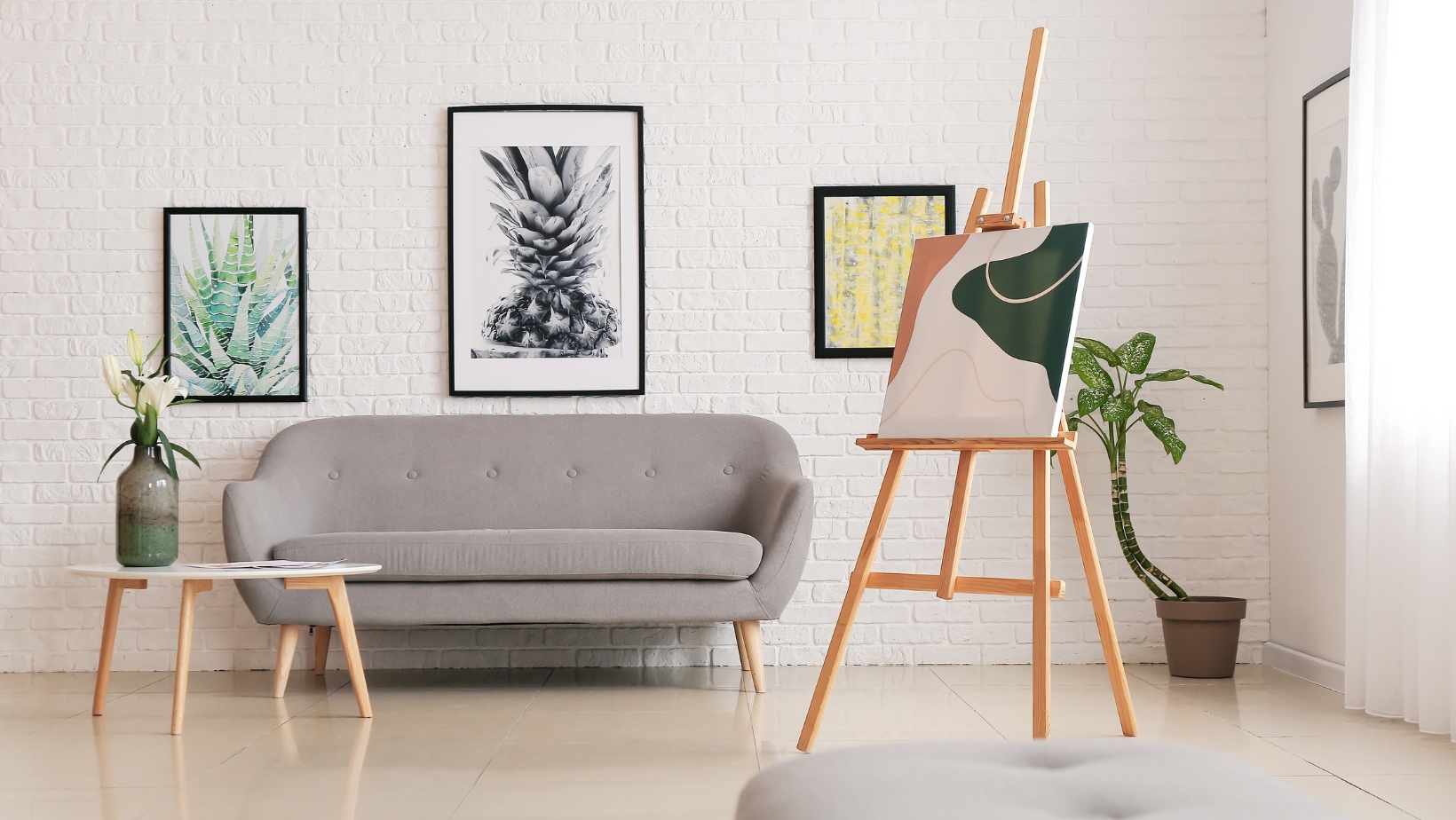
The modular nature of Mixtiles allows for endless configuration possibilities.
4. Thematic Storytelling Walls
Create meaningful narratives through carefully curated collections of images that tell your unique story. These themed galleries become conversation pieces that engage visitors.
Personal Memory Collections
Organize photos chronologically or by life events. Include milestone moments, celebrations, and everyday memories that capture your journey.
Travel and Adventure Themes
Display photos from different destinations using maps, tickets, and location-specific artwork. Create visual journeys that transport viewers to different places.
Family Heritage Displays
Incorporate vintage family photos, heirlooms, and meaningful documents. Mix black-and-white with color images to create temporal depth.
5. Geometric Precision Arrangements
Mathematical approaches to gallery wall design create visually striking patterns that catch the eye and maintain order through careful planning.
Hexagonal Clustering
Create honeycomb-like patterns using identical frame sizes. Start from a central hexagon and build outward symmetrically.
Triangle-Inspired Layouts
Arrange frames in triangular groupings that point toward focal points. Use varying sizes while maintaining consistent angles.
Circular Composition Techniques
Design spiral or circular arrangements that draw the eye inward. Graduate frame sizes from larger to smaller as the pattern moves outward.
6. Color-Coordinated Gallery Strategies
Use color as the primary organizing principle to create cohesive and visually striking gallery walls that complement your space.
Monochromatic Approaches
Select artwork and frames within a single-color family. Layer different shades and tones to create depth and interest.
Complementary Color Schemes
Work with opposite colors on the color wheel to create dynamic contrast. Balance bold colors with neutral elements.
Gradient and Tonal Variations
Arrange pieces to create a gradual color transition across the wall. Mix in black-and-white pieces to provide visual breaks.
7. Vertical and Horizontal Flow Designs
Create movement and direction in your gallery wall through intentional arrangement patterns that guide the viewer’s eye.
Cascading Vertical Layouts
Design flowing arrangements that move downward, perfect for stairwells or tall walls. Vary frame sizes while maintaining vertical alignment.
Horizontal Landscape Arrangements
Create panoramic effects with side-by-side arrangements. Perfect for long hallways or above furniture pieces.
Diagonal Dynamic Compositions
Incorporate diagonal elements to add energy and movement. Use varying frame sizes to create a natural flow.
8. Minimalist and Negative Space Techniques
Embrace the power of simplicity and strategic spacing to create impactful gallery walls that don’t overwhelm you.
Strategic Frame Placement
Use fewer pieces with more intentional spacing. Focus on quality over quantity to create striking focal points.
Utilizing Wall Color
Incorporate wall color as an active element in your design.
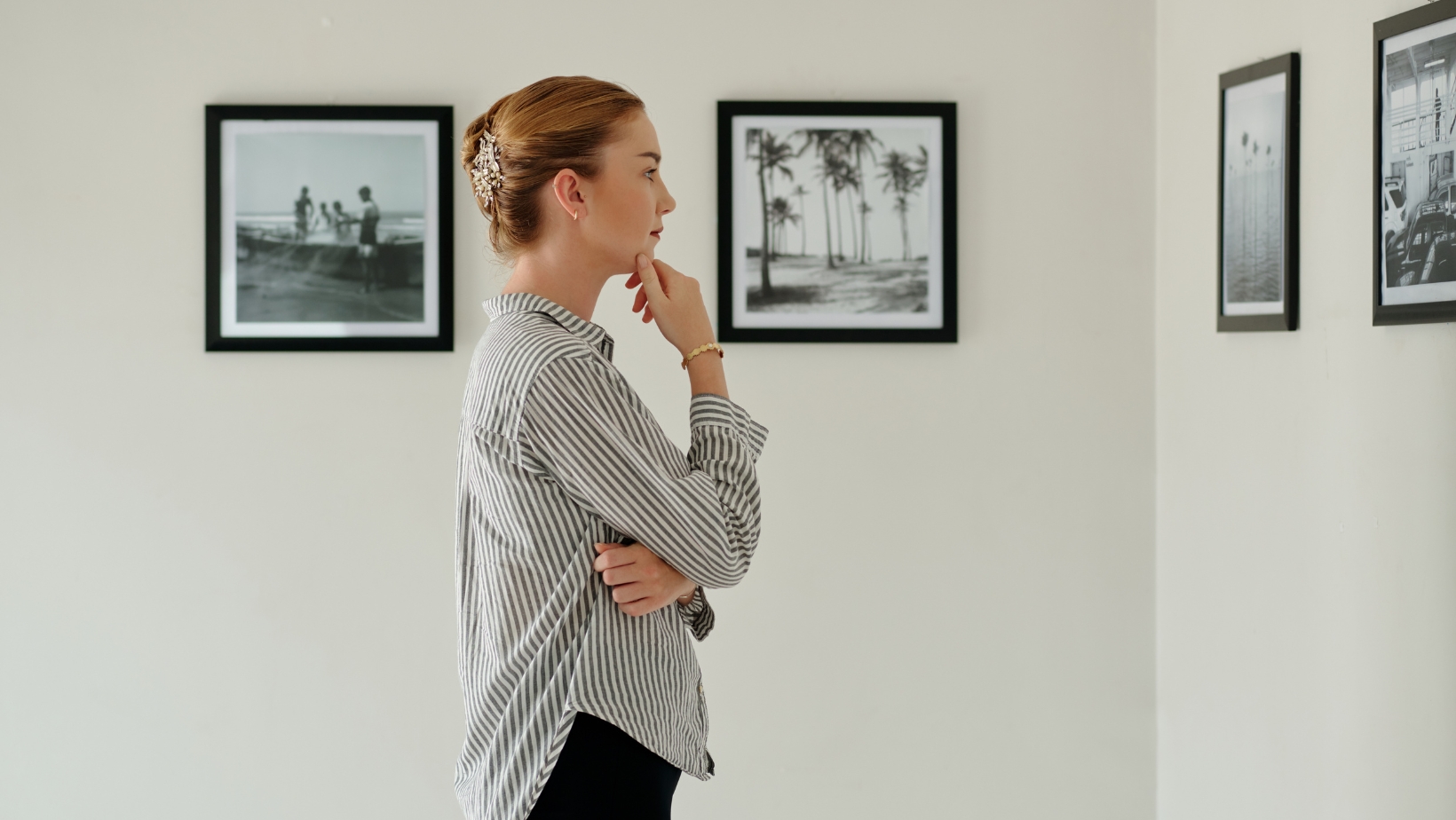
Choose frames that contrast or complement the wall tone.
Reducing Visual Clutter
Select pieces that share common elements to maintain cohesion. Limit variety in frame styles and colors.
9. Mixed Media and Texture Exploration
Create depth and interest by incorporating various artistic mediums and textural elements into your gallery wall.
Combining Photography and Art
Mix photographs with paintings, prints, and drawings. Use complementary subjects or themes to maintain unity.
3D Object Integration
Include sculptural elements, mirrors, or dimensional artwork. Create shadow and depth through layering.
Textural Frame Selection
Incorporate frames with different finishes and materials. Mix smoothly with rough textures for visual interest.
10. Digital Age Gallery Wall Innovations
Embrace modern technology to enhance your gallery wall design and installation process.
Digital Frame Technology
Incorporate digital frames for rotating displays. Program seasonal or themed content changes.
Augmented Reality Previewing
Use AR apps to visualize arrangements before installation. Test different layouts virtually to find the perfect design.
Smart Arrangement Tools
Utilize digital planning tools and apps for precise measurements. Create virtual mockups to perfect your layout.
Elevating Your Gallery Wall Design
As you embark on your gallery wall journey, remember that the most successful designs reflect personal style while adhering to basic design principles. Start with a clear vision, but allow room for creativity and evolution. Consider your space’s lighting, architecture, and existing décor when planning your arrangement.
Most importantly, let your gallery wall tell your story while creating a visually stunning focal point in your home. With these innovative approaches and careful planning, you’ll create a gallery wall that not only looks professional but also brings joy and personality to your living space.

